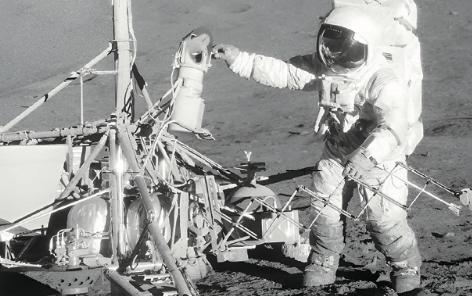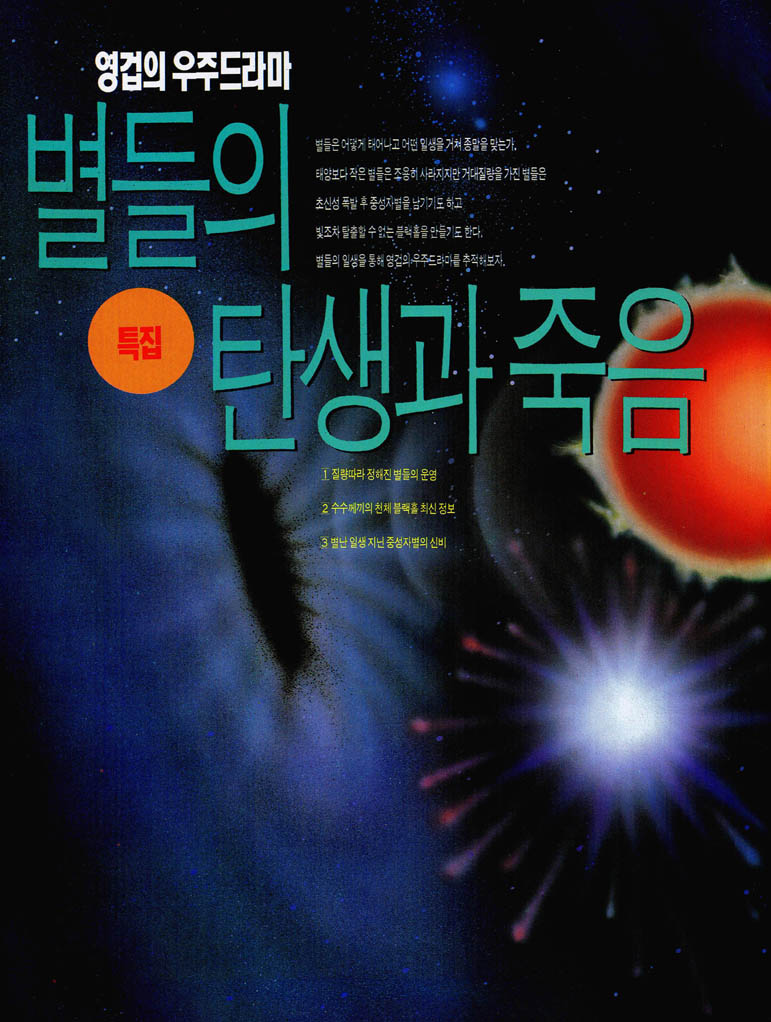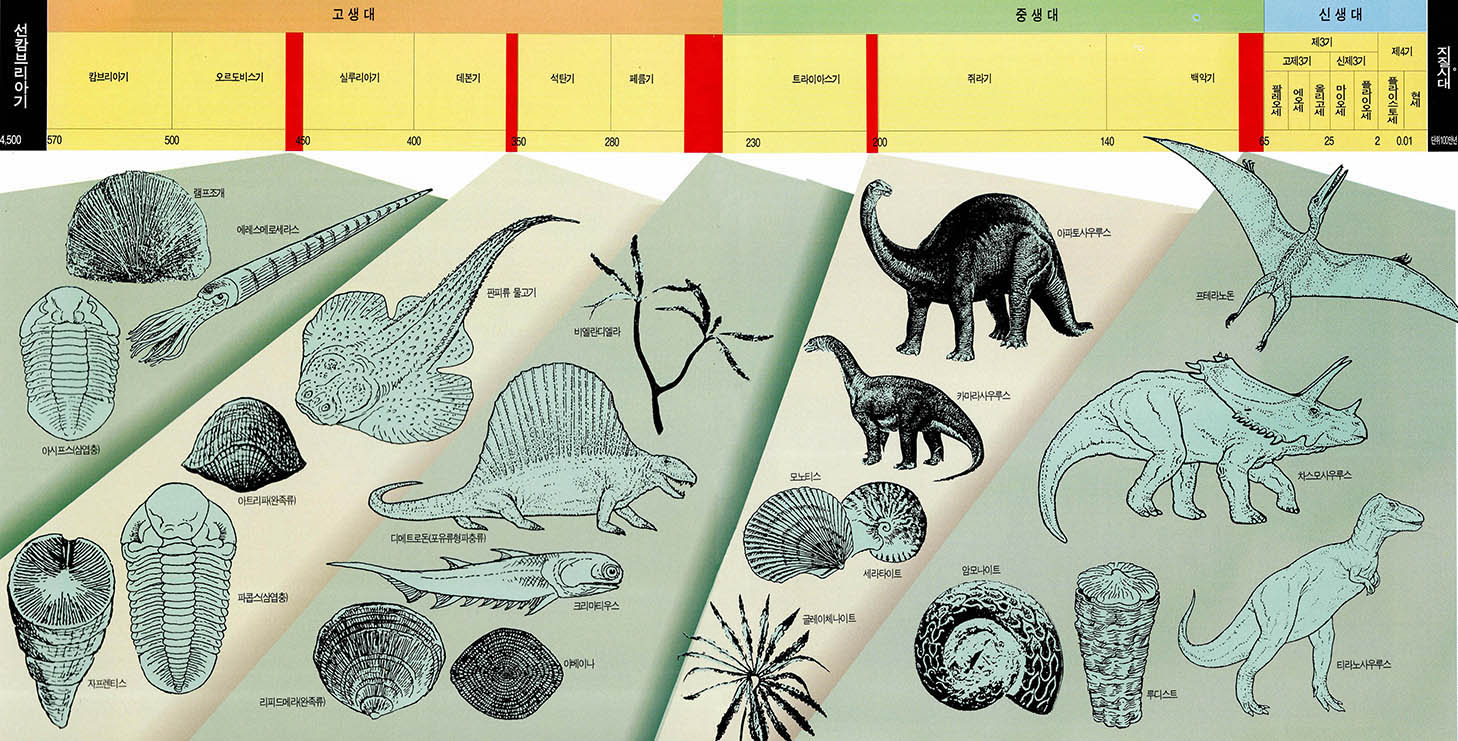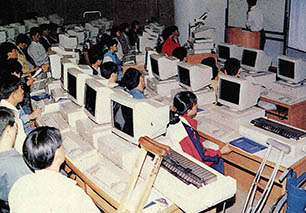1987년은 윤년이 아니었다. 정확히 하루에 8만6천4백초씩 3백65일로 이루어져 있었다. 그러므로 1987년의 총 초 수는 3천1백53만6천초였어야 했다. 그러나 그렇지가 않았다. 지난 해는 3천1백53만6천1초이었다. 그 까닭은 한해가 끝나가기 바로 직전에 국제협정에 따라 1초가 더해졌기(윤초) 때문이다.
왜 그랬을까? 이유는 지구가 불규칙하게 돌기 때문이다.
지구의 불규칙한 자전은 비교적 최근에 알려진 사실이다. 지구는 매우 무거워서 그 자전속도를 변경시키려면 엄청난 힘이 필요하다. 지구의 자전은 겉보기에 상당히 일정해 대개 별 하나가 매8만6천4백 초마다 1초도 늦거나 빠르지 않게 머리위로 통과하는 것을 예측할 수 있다.
그렇지만 지구의 자전이 정확하지는 않다. 지구내에는 물질의 이동이 있다. 액체로 된 중심핵이 지구가 회전하면서 약간씩 흐르게 된다. 여기저기에서 물질을 재분배시키는 지진이 발생한다. 겨울동안 많은 양의 물이 바다로부터 올라와 육지에 눈으로 쌓이게 되고, 봄이 되면 그 물이 다시 바다로 돌아간다. 바다에는 해류가 있고 대기에는 바람이 있다. 이들 모두가 지구 자전에 변화를 가져와서 이따금 몇분의 1초씩 느리게 하거나 빠르게 한다. 이것은 결국 모두 서로 상쇄되므로 그렇게 걱정할만한 현상은 아니며 간혹 몇분의 1초 어긋나더라도 사정이 나빠지는 것은 아니다. 그러나 차츰 쌓여가는 변화가 한가지 있다. 그것은 조수를 뜻한다.
달의 인력효과는 지구과 달과 비껴있는면에서보다 달과 정면으로 마주보고 있는면에서 더 큰데, 그것은 지구에서 비껴있는면이 달로부터 8천마일정도 더 멀리 떨어져 있기 때문이다. 그 결과 달의 방향으로 지구가 약간 부풀어 오른 현상이 나타난다. 부풀음은 고체상의 육지보다 액체상의 바다에 더 큰 효과를 가지고 있다. 달을 향해 있는 쪽과 그 반대편의 해양에 약간의 부풀어 오름이 있게 된다. 지구는 그 부풀어 있는 곳을 통과하여 자전, 해수면이 1일에 두번 육지로 올라오고 다시 내려가게 된다. 그것이 조수이다.
지구가 자전하면서 양쪽에 부풀어 오른 물이 천해(淺海)의 바닥(베링해와 아일랜드해와 같은 곳)과 해안가를 깎아 낸다. 이러한 침식은 마찰을 일으키고 모든 마찰에서처럼 에너지를 열로 전환시킨다. 이러한 사실은 지구가 꾸준하게 자전에너지를 잃어서 자전속도가 느려진다는 것을 의미한다.
조수현상도 우리가 느낄 정도로까지 자전속도에 영향을 미치지는 못한다. 그러나 천문학자들은 알고있다. 만약 그들이 과거의 천문학자들에 의해 기록된 자료로 별들의 위치를 조사한다면 시간에 따라 확실히 그 위치가 이동했다는 것을 알게 된다. 지구의 자전속도가 매우 천천히 느려져 갈 때 별들은 뒤로 쳐져서 제때에 천정에 이르지 못한다. 그 변화는 쌓여간다. 몇천년 후에 하루의 길이가 눈에 띄게 길어지지는 않더라도 별들은 제자리를 벗어나 있게 된다. 이것은 일식의 경우에도 맞는다. 몇세기 전에 일식이 어디에서 관측되어졌는가를 계산할 경우, 우리는 일식이 수마일 떨어진곳에서 관측되었음을 알게 될 것이다.
과거의 천문학 기록의 조사는 단지 우리에게 평균해서 얼마나 자전속도가 느려졌는지에 관해서만 이해하도록 해준다. 어떻게 우리가 날마다의 지구자전 속도를 측정할 수 있겠는가? 그런 측정을 하기 위해서 우리에게는 지구가 움직이는 것보다 더욱 정확히 움직이는 시계가 필요하다. 그런 시계는 1955년이 되어서야 비로소 개발되었다.
그 때쯤에서야 우리는 원자의 진동수를 측정할 수 있는 시계를 가지게 되었다. 여러분은 1초에 91억9천2백63만1천7백70번의 진동수를 셀 수 있을 것이고 그 수는 항상 일정하다. 한번이라도 적거나 많아지지 않는다. 그리고 나서 여러분이 하루의 길이를 측정한다면(혹은 천정에서 한 특정한 별이 다시 그 자리에 올 때까지의 시간) 하루의 길이가 날마다 몇 번의 진동수 차이로 달라진다는 것을 알게 된다. 때로는 빨라지거나, 느려지지만, 결국에는 느려지게 된다.
지구의 자전이 0,9초 늦어졌을 때 '윤초'가 더해져서 지구는 다시 시간이 맞추어진다. 이 제도가 1972년에 처음 시작되었을 때, 지구의 시간을 제자리로 맞추기 위해서 10초가 더해 졌다. 그후 15년간 13윤초가 더해져야만 했다. 윤초는 6월말이나 12월말에 더해진다. 가장 최근의 윤초는 1987년 12월 31일의 마지막초에 더해졌다. 그 바로 전에는 1985년 6월 30일에 윤초가 있었다. 이는 천문학자 뿐만 아니라 항해하는 선박이나 전 세계의 라디오와 텔리비전방송 등을 위해서 꼭 필요한 조치이다.
궁극적으로 먼 훗날에는 매일마다 1초의 윤초를 더해주어야 할 것이고, 그때마다 하루가 1초 더 길어졌다는 사실을 인정해야 할 것이다. 그때 우리는 하루의 초수가 같아지도록 하기 위해 현재보다 약간 긴 초를 정할 수 있게 된다.
그러나 그 동안에는 가끔식 더해주는 1초의 윤초만이 우리가 필요로 하는 모든 것이 된다. 마지막에 더해 준 윤초는 수년을 그냥 지나가게 해줄 것이다.
The year 1987 was not a leap-year. It consisted of exactly 365 days of 86,400seconds each. Therefore the total number of seconds in 1987 should have been 31,536,000. But it wasn't. The number of seconds was 31,536,001. The reason is that just before the year ended, an additional second (a "leap-second") was added by in-ternational agreement. Why? Because the Earth turns irregularly.
The irregular turning of the Earth is a comparatively recent discovery. The Earth is so massive that it takes huge forces to alter its rate of rotation ; because its rotation apparently is so steady, it generally is possi-ble to predict that a star will pass overhead every 86,400 seconds, not a second later, and not a second sooner.
The Earth's rotation, however, isn't per-fect. There are shiftings of mass in the Earth. The liquid central core sloshes a bit as the Earth turns. There are earthquakes that re-distribute masses here and there. During winter, masses of water are withdrawn from the ocean and deposited on land as snow, than in the spring the water us returned. There are water currents in the ocean and winds in the atmosphere. All this introduces wobbles in the Earth's turning so that it is a fraction of a second slow, or a fraction of a second fast now and then.
This wouldn't be so bad because in the long run it would all even out, and even if you were off a fraction of a second now and than, it would never get worse than that. There is, however, one change that is cumulative. It involves the tides.
The moon's gravitatinal effect is greater on the side of Earth that faces it than on the side turned away from it, because the side facing away is 8,000 miles farther from it. The result direction of the moon. The stretching has a greater effect on the liquid ocean than on the solid land. There is a small bulge in the ocean on the side toward the moon and another on the side away from the moon. The Earth turns through those bulges so that the sea-level creeps up the shore, then down the shore, twice a day. Those are tides.
As the Earth turns, the two bulges of water scrape against the shallower sea bot-toms(such as those of the Bering Sea and the Irish Sea) and also against the shores. This scraping produces friction and, like all fric-tion, it turns energy into heat. This means that the Earth is steadily losing rotational energy and its rate of rotation is slowing.
Even the tides can't affect rotation rate enough for us to notice. Astronomers notice it, though. If they study the positions of stars as reported by earlier astronomers, they notice that those positions shift steadily with time. When the Earth's rotation rate slows up very slightly, the stars seem to lag behind and not reach zenith as quicjly. The change is cumulative; after a couple of thousand years, the srats are way out of place even though the day hasn't lengthened noticeably. This is also true of eclipses. If we calculate where a solar eclipse should have been seen a few centuries ago, we find that the eclipse was seen-but miles away.
Studying past astronomical records just gives us a notion how the rotation rate slows down on the average. How do we measure the rotation rate of Earth from day to day? For that we need a clock that moves more steadily than the Earth does. Such a clock was not developed until 1955.
By that time we had atomic clock capable of counting the vibrations of atoms. You could count, say, 9,192,631,770 vibrations per second, and that would always stay the same; it would naver be one vibration more or one less. If you then measure the length of each day (or the time between successive appearances of a particular star at zenith) you can tell that the day varies by a few vibrations from day to day, sometimes speeding up, sometimes slowing down, but in the long run, slowing down.
When the Earth's rotation has fallen be-hind by 0.9 seconds, a "leap-second"is add-ed and the Earth is in sync again. When this system was started in 1972, 10 seconds were added to bring the Earth back into sync. In the 15 years since, 13 leap-seconds have had to be added. They are added either at the end of June or the end of December. This last one was added as the final second of Dec. 31,1987. The one before was added as the final second of June 30, 1985. This is something that is necessary not for astronomers, but for those who navigate ships, for those in charge of the world's radio and television com-munication and so on.
Eventally, in the distant future we will have to add a leap-second every single day, at which point we'll just to agree that the day has become a second longer. We can then define the second as a very tiny bit longer than it is now so as to keep the same number of seconds per day.
But meanwhile, a leap-second every once in a while is all we need and the one we've just had will keep us going a couple of years.
(c) 1988, Los Angeles Times Syndicate
이 기사의 내용이 궁금하신가요?
기사 전문을 보시려면500(500원)이 필요합니다.
1988년 06월 과학동아 정보
🎓️ 진로 추천
- 천문학
- 물리학
- 지구과학
1988년 06월 과학동아 다른추천기사

















